Backflow Prevention & Testing Brisbane
Backflow prevention devices are required to be regularly tested and maintained by a licensed plumber on an annual basis and the results of these tests need to be provided to your relevant councils such as the Brisbane City Council or the Moreton Bay Regional Council. Failure to conduct these tests may lead to public health risks.
Inspection & Maintenance of Backflow Prevention Devices & Air Gaps
It is important to keep backflow prevention valves functioning properly as a malfunctioning backflow device can leak contaminated fluids back into Brisbane’s water supply.
What is Backflow?
Backflow is the process where a reversal of fluids then enters the main water supply line of a property. These contaminated fluids could contain chemicals, sewage, or other foreign matter. Understandably this is a high risk situation and could lead to major health problems if not properly contained with an effective backflow preventer.
How Does Backflow Occur?
The main water supply system in Brisbane and Moreton Bay catchments is designed so that the flow of water to your property is delivered under pressure, this ensures a strong consistent flow of water at the tap. If that pressure fails or is not maintained, there is a chance that the water can flow backwards into the mains supply.
It imperative to maintain a consistent water pressure so being aware of how water pressure can drop will help you identify any possible backflow hazards. If there is:
- A crack or disruption in the water main
- Water being pumped from a water main during a fire
- A higher water pressure on your property than that supplied by the water authority
- Heavy water use downstream from your property
- An elevated water outlet that is higher than the water main
Contamination hazards are present when there is a cross connection between your water supply and a contaminated source. A pressure drop would then create a vacuum effect which can draw the contaminated fluids back to the mains supply. We have outlined the types of properties where there is a higher than normal risk to public health below. For more info, see the Brisbane Council backflow fact sheet.
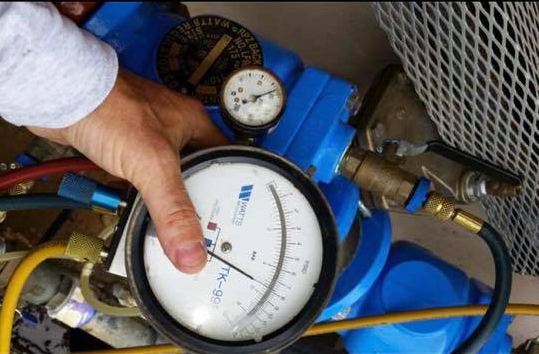
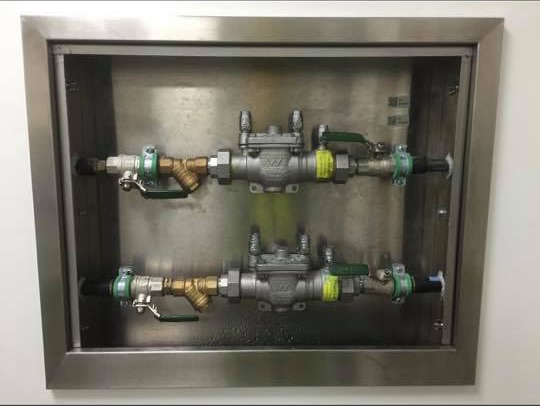
How to Apply for a Backflow Device Permit
Once you’ve had a plumber complete the backflow prevention tests, copies of the Form 9 test results together with payment of the renewal fee and the removable section of the fee notice issued by your local council must be submitted. This is the basic process required to renew your backflow prevention permit for the next year. Payment methods and council contacts are listed on your fee notice for your reference.
Potential Sources of Contamination
Common areas where backflow contamination may occur include:
- Air conditioning towers
- Irrigation areas
- Fire hose reels
- Ornamental Ponds
- Swimming pools/spas
- Vehicle maintenance pits
- Dishwasher/glass washers
- Bidets/bain-maries
- Vehicle washing bays
- Sullage pits/process tanks
- Chemical injection areas
- Dockside facilities/jetties
- Boilers/steam pipes
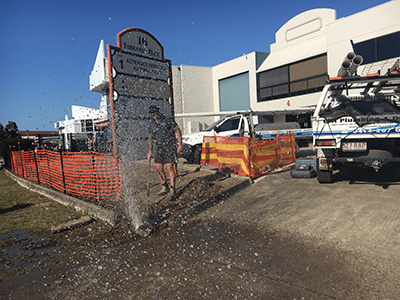
Examples of properties required to comply with backflow prevention:
- Motels and unit complexes
- Catering and allied industries
- Hotels
- Vehicle repair workshops
- Shops and restaurants
- Caravan parks
- Medical and dental surgeries including veterinary surgeries
- Car and plant washing facilities
- Dry cleaners and laundries
- Hospitals and funeral parlours
- Clubhouses for sports etc.
- Industrial installations
- Schools, daycare centres, and kindergartens
- Abattoirs
- Pest control and water carrying vehicles
- Chemical (storage) plants
- Properties used for agricultural and horticultural purposes
- Marinas, shop yards and boat building properties
- Zoos and local attractions
- Botanic gardens
- Railway stations
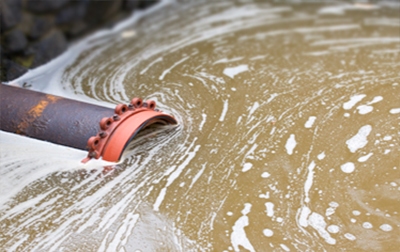
All About Backflow Testing
What is a backflow prevention device?
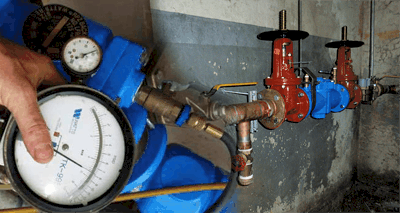
Single Check, Dual Check or RPZ?
There are two types of backflow prevention devices, testable and non-testable mechanisms. Three branches of testable devices are some single check valves, double check valves, and reduced pressure zone valves (rpz valves). Non-testable backflow prevention devices include dual check valves and some single check valves. The level of risk for hazardous water is the sole determining factor of which style of device is needed. Testable backflow prevention devices are necessary for areas with higher risk of medium to high water contamination.
What types of installations require backflow prevention testing?
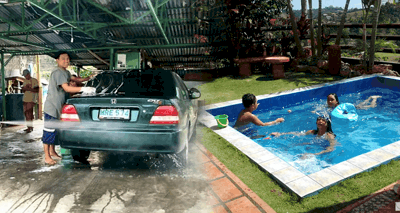
What are my responsibilities?
Primarily, it is pertinent for those who obtain a testable backflow device to be sure it is checked officially by an endorsed backflow plumber. Once this process is complete the device must be registered with the Council under Queensland Government plumbing legislation. It is legitimate for the owner of the backflow prevention device to be the property tenant or the owner. The endorsed backflow plumber should return every 12 months to keep up to par with health regulations of the city.
What if I don’t have the backflow prevention valve tested?
Three penalty units for each device that is not registered is the penalty given by the Council to the property owner or tenant in connection with the backflow prevention device(s). The Council holds the power to issue a Penalty Infringement Notice by the Standard Plumbing and Drainage Regulations of 2003 (clause 38 (3)) if you refrain from your duties as the backflow prevention device owner. It is not required for any non-testable backflow prevention device to be tested annually.
What are the responsibilities of the a backflow plumber?

How do I locate the backflow device on my property?
The endorsed backflow plumber is permitted to record the physical location of each backflow prevention device. This information is submitted to the Council on Form 9. These location descriptions are kept and serve as a part of the annual reminders sent by the Council to property owners and tenants.
Can I remove a backflow preventer?
If the potentially hazardous water is still an existing issue, the backflow prevention device must remain in fully intact until it is officially tested by an endorsed backflow plumber. Please consult a local licensed plumbing contractor if questions arise regarding the removal or replacement of the backflow prevention device. If the time comes for a change of devices to occur, it is the responsibility of the licensed plumbing contractor to send a copy of Form 9 (this can be found on the Queensland Government website) to the Council. The endorsed plumber also needs to submit a completed Form 4 to the Queensland Building and Construction Commission. The fee for registration is payable for all new devices.
What is Council’s role?
Brisbane City Council is committed to keeping the beautiful city of Brisbane clean and up to sanitary regulations for the betterment of the overall community. We are required by law to provide a program for all installed testable backflow prevention devices within our government area regarding their maintenance, registration, and testing. To ensure necessary correspondence is covered, regarding the maintenance of every registered testable device, the Council charges an annual fee to the owner of the testable backflow prevention device(s). In order to reduce the risk of contamination to the drinking water of the city, we work hand-in-hand with property owners and tenants to ensure the required service of the backflow prevention devices is attended to within the proper timing and Council regulations.
Get A Quick Quote
Got a query? Give us a call on 0412 267 000 or Please fill in the enquiry form below and a member of our Brisbane plumbing team will give you a call at a time to suit you.


